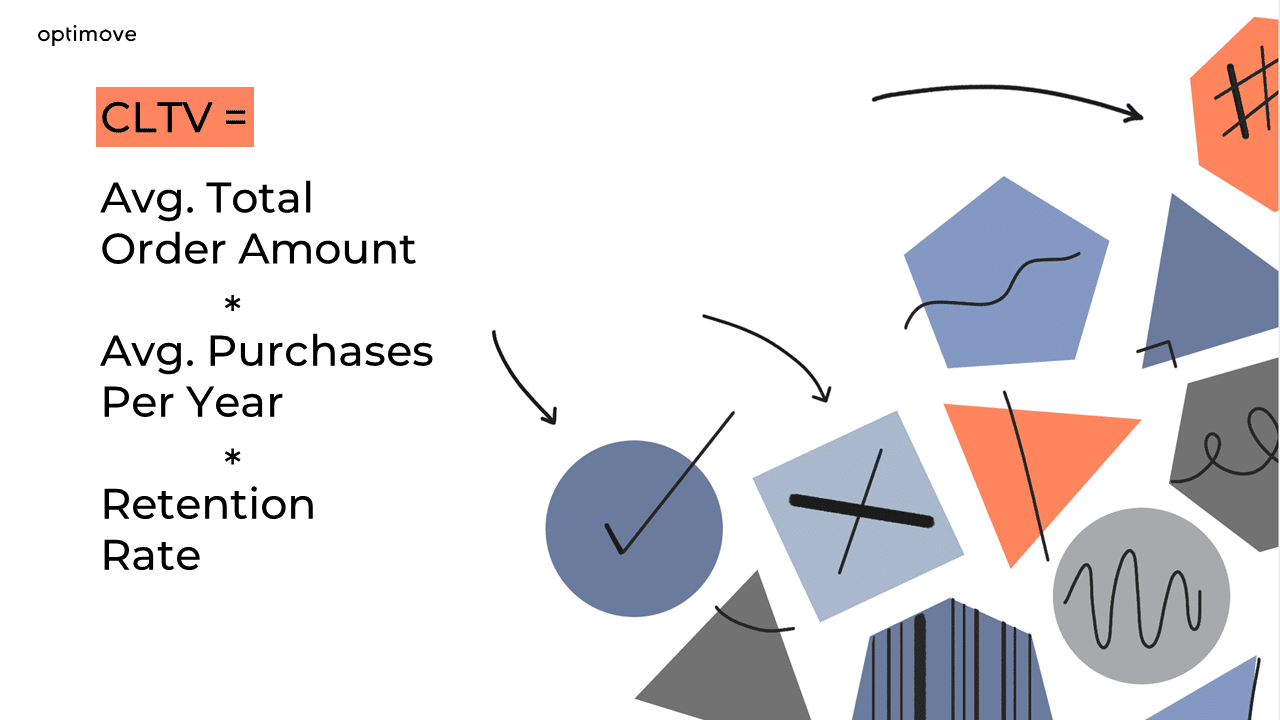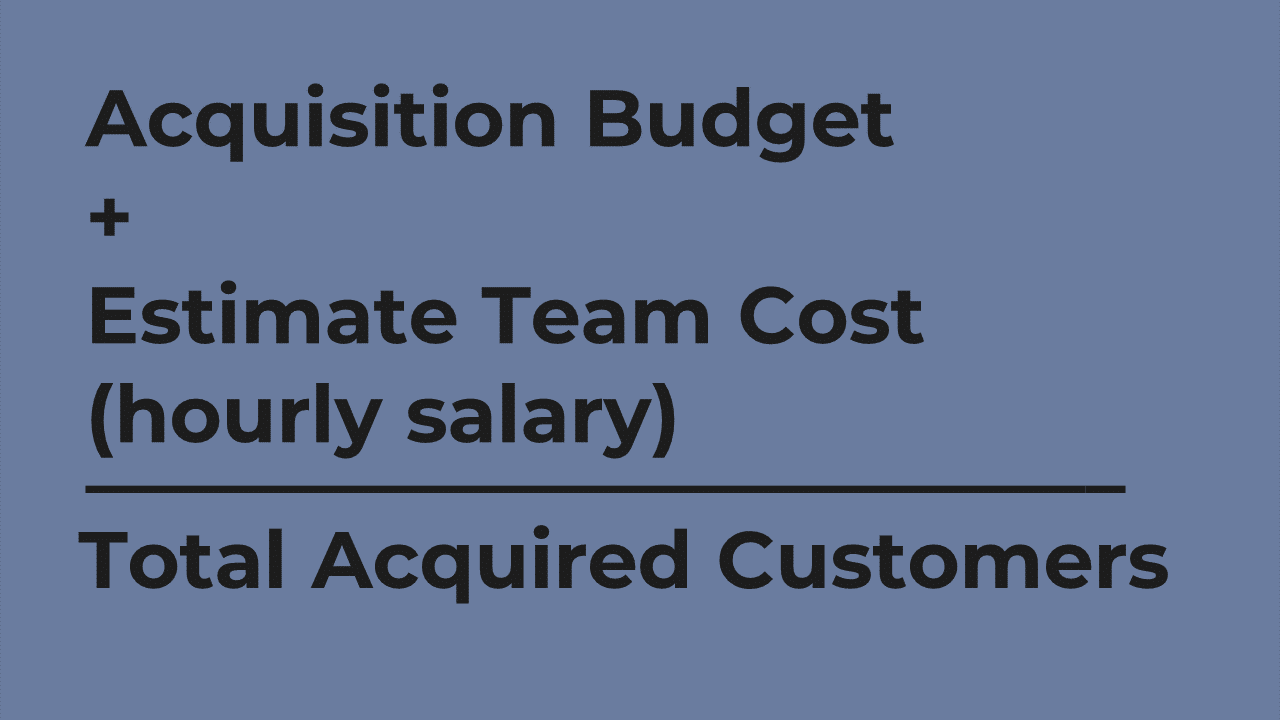What is Customer Lifetime Value?
Customer lifetime value (CLV or Customer LTV) is the predicted sum total of all future revenues (or profits) that a particular customer will generate for a business. Using accurate estimates of CLV as the basis for marketing decisions will maximize the company’s revenues (or profits).
For example, let’s say a betting operator analyzes its customer data and estimates that the average customer will place bets consistently for six months, spending an average of $50 per month. The Customer Lifetime Value (CLV) for that customer would be $300 ($50/month * 6 months). This information helps the betting operator make informed decisions about marketing strategies, loyalty programs, and customer retention efforts to maximize the long-term value of each customer.
The catch is that calculating accurate predictions of customer LTV is a significant challenge. What is the best way to find the customer lifetime value calculation? Now that you know the customer lifetime value definition, let’s look at the CLV formula.
Customer LTV Excel Calculator Template
Customer Lifetime Value Formula
Customer lifetime value is the total amount of money that a customer will spend from acquisition through the end of the relationship with a business. The customer lifetime values metric is used for a variety of marketing and analytical purposes. Many different formulas of varying complexity are used today to measure lifetime value.
The simplest formula for measuring customer lifetime value is:
CLV = Avg Total Order Amount * Avg # Purchases Per Year * Retention Rate
In other words, customer lifetime value is the average order total multiplied by the average number of purchases in a year multiplied by average retention time in years.
For example, here’s the formula based on the example we provided above:
CLV=Average monthly revenue×Average customer lifespan
CLV = $50 x 6 = $300
Moreover, if the profit margin is, for instance, 15%, the adjusted CLV considering profit margin would be:
CLV = $50 x 6 x 15% = $90
This CLV figure enables the betting operator to project future revenues, guide marketing strategies, and assess the profitability of acquiring and retaining customers.
This formula provides the average lifetime value of a customer based on existing data. This information can be used with data from certain segments to better target retention and promotional efforts. The customer lifetime value formula also provides a data point for use during customer segmentation.

Measuring CLTV with Revenue and Margins
Some companies determine lifetime value of a customer using the actual amount of money a customer has spent. A popular alternative is to calculate the lifetime value based on margins to arrive at gross figures. This is often done by figuring out the average margin on products and adjusting the order totals appropriately. This provides a more accurate lifetime value in relation to profits.

How to Calculate Customer Acquisition and Marketing Costs
Many complex customer lifetime value formulas deduct acquisition and marketing costs from the final total. Customer acquisition costs are calculated by dividing all expenses (expenses and headcount costs) related to acquisition by the number of new customers gained during the same period. Deducting acquisition costs is useful for planning acquisition strategies and for measuring the success of different campaigns.

The Advantages of Utilizing Customer Lifetime Value
It is easy to always focus on the present, but this is often not the best way to tap into the full potential value of each customer. For example, looking at conversion rates and first purchases while ignoring the long-term value of customers may lead marketers to invest resources in acquiring “cheap” customers with low total revenue value, instead of paying more to acquire customers which will continue to deliver a steady stream of income for years to come.
Likewise, marketers and retention experts should focus resources on nurturing customer relationships with those customers who will continue to be a source of substantial revenue over the long term, while conserving resources which would be wasted on low-value customers.
CLV helps businesses allocate resources effectively by identifying high-value customers. This ensures that marketing efforts and resources are directed toward segments that contribute most to long-term profitability.
CLV also provides a basis for forecasting future revenues and planning for business growth. It assists in making informed decisions about investments, expansion, and overall business strategy.
When a company has a reliable means of predicting CLV, it will be possible to better manage customer relationships, maximize the effectiveness of marketing and retention actions, optimize the resources invested in retaining each customer and better attain accurate customer metrics.
In brief, the goal of using CLV is to focus on finding, nurturing and retaining those customers which create the most value for the company over the long term.
The Difficulty in Predicting Customer Lifetime Value
Calculating customer lifetime value (CLV) requires accurate estimates of future events and is therefore very challenging. It is difficult to predict parameters such as how long a customer will remain engaged with a company and how much the customer will spend in each time period, especially when the customer is new. Further compounding the challenge is the fact that the data required to perform the customer lifetime value calculation may be hidden deeply within multiple databases.
Some simplistic approaches try to lump customers into logical groupings such as: all customers who came from a particular source, who live in a particular location or who bought a particular product/service. More sophisticated approaches attempt to use well-known statistical techniques to try to predict the future, such as linear regression or Bayesian probabilistic models. However, all of these have large (or huge!) margins of error and therefore present a very risky basis when used for important marketing decisions.
The CRM Marketer Evolution Curve’s Guide
Learn about the 5 stages of a marketer’s evolution. Discover which level you are on and how you can move up.
How CLV is Used in Marketing
Calculating and analyzing customer lifetime value (CLV) helps you understand existing and potential customers to decide if your current retention and acquisition strategies are the most effective. By measuring and analyzing CLV, you can increase your product’s value to potential customers and encourage existing customers to remain engaged.
Combining CLV and artificial intelligence (AI) makes it easier to calculate a customer’s CLV and understand how to improve the customer’s value:
- AI allows marketers to calculate and analyze large amounts of data, helping marketers implement marketing campaigns that maximize a customer’s lifetime value.
- AI technology helps analyze a large amount of data to determine the best marketing campaign to get the most value out of each individual customer.
- Incorporating AI in CLV measurements helps you calculate and predict CLV, giving marketers more time to create and implement marketing strategies to capitalize on valuable customers and raise the value of the less valuable ones.
A DIY Approach to Calculating Customer Lifetime Value
If you want to forecast customer lifetime value yourself (without using a sophisticated application such as Optimove), check out our blog post, DIY Hack: How to Calculate Customer Lifetime Value Using Excel.
The Optimove Approach to Calculating Customer Lifetime Value
At the core of Optimove’s ability to accurately predict the most effective marketing actions for each customer is a unique method of calculating Customer Lifetime Value for each new (and existing) customer. The customer LTV forecasting technology built into Optimove is based on advanced academic research and was further developed and improved over a number of years by a team of first-rate PhDs and software developers. This method is battle-tested and proven as an accurate and effective approach in a wide range of industries and customer scenarios.
Optimove’s approach to forecasting CLV combines ongoing dynamic micro-segmentation and a predictive behavior modeling system. By intelligently segmenting the entire customer base into very granular, homogeneous groups (based on customer activity, transactions and demographics), it becomes possible to analyze and predict customer behavior and lifetime value to a high degree of accuracy.
Frequently Asked Questions
How does Optimove calculate customer lifetime value?
Optimove’s customer LTV forecasting technology combines two technologies:
Continual dynamic micro-segmentation – intelligently and automatically segments the entire customer base into a hierarchical structure of ever-smaller behavioral-demographic segments. This segmentation is dynamic and updated continually based on changes in the data.
Predictive behavior modeling – this mathematically intensive modeling is based on the fact that the behavior patterns of individual customers frequently change.
By merging the most exacting micro-segmentation available anywhere with a deep understanding of how customers move from one micro-segment to another over time—including the ability to predict those moves before they occur—an unprecedented degree of accuracy in customer LTV forecasting is attainable.
What is considered a good customer lifetime value?
A good Customer Lifetime Value (CLV) is one that exceeds the Customer Acquisition Cost (CAC), ensuring a positive return on investment. It should align with industry benchmarks, be consistent or growing over time, and consider variations across customer segments. CLV should also factor in profit margins, adapt to business goals, and reflect a balance between acquisition and retention strategies. Positive customer satisfaction, advocacy, and the ability to cover ongoing service costs contribute to a robust CLV, indicating the value a customer brings to a business over their lifetime.

Take Advantage of the World’s Most Advanced Customer Lifetime Value Forecasting Technology
Now that we’ve defined customer lifetime value and looked at how to measure CLV, it’s time to put it into action.
Contact us today – or request a Web demo – to learn how you can use Optimove’s Customer Lifetime Value software to easily optimize your marketing actions in order to convert more customers, increase the spend of existing customers and reduce customer churn.
Get a personalized tour of Optimove
Let us show you how to go from tens to hundreds of segments


